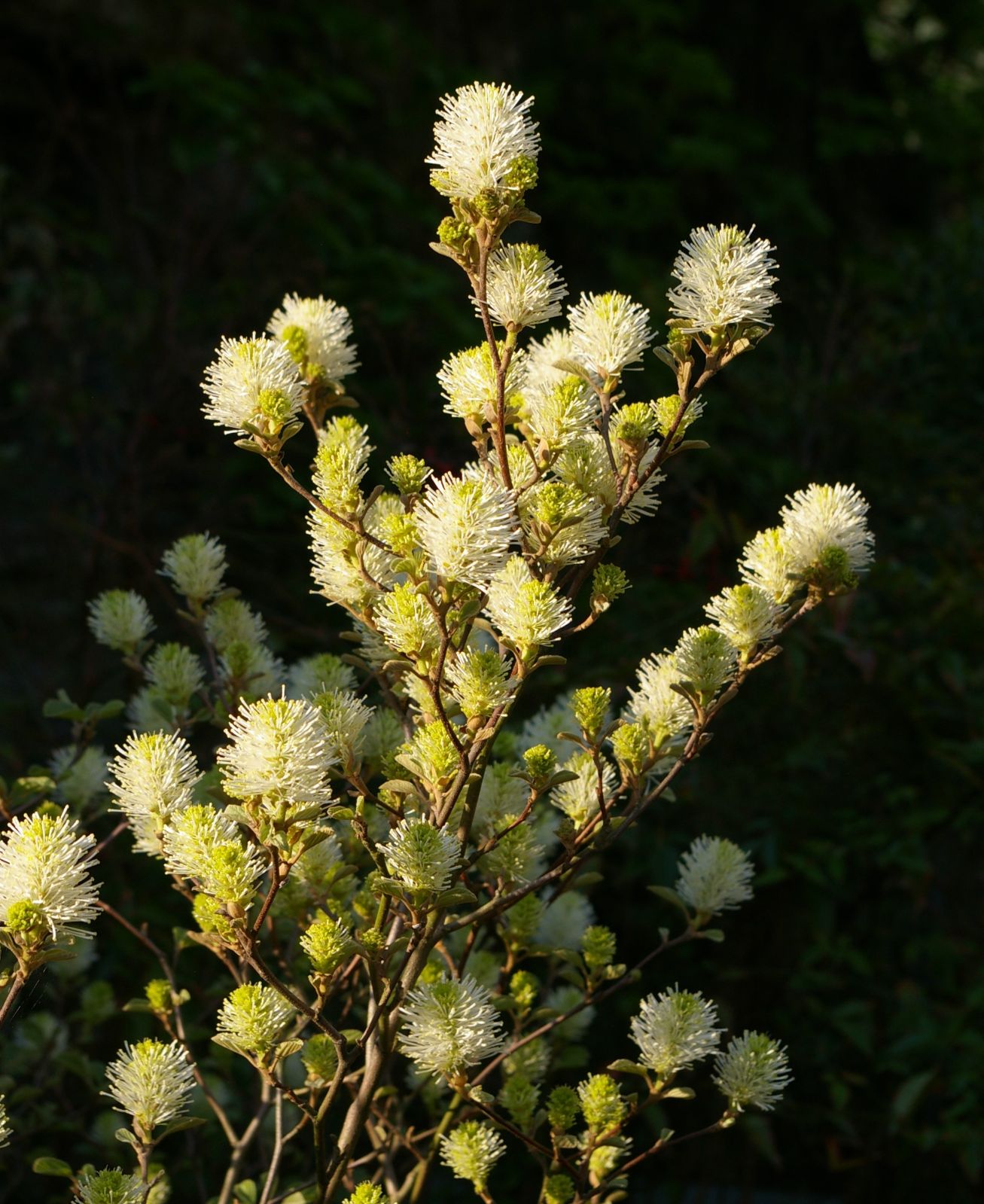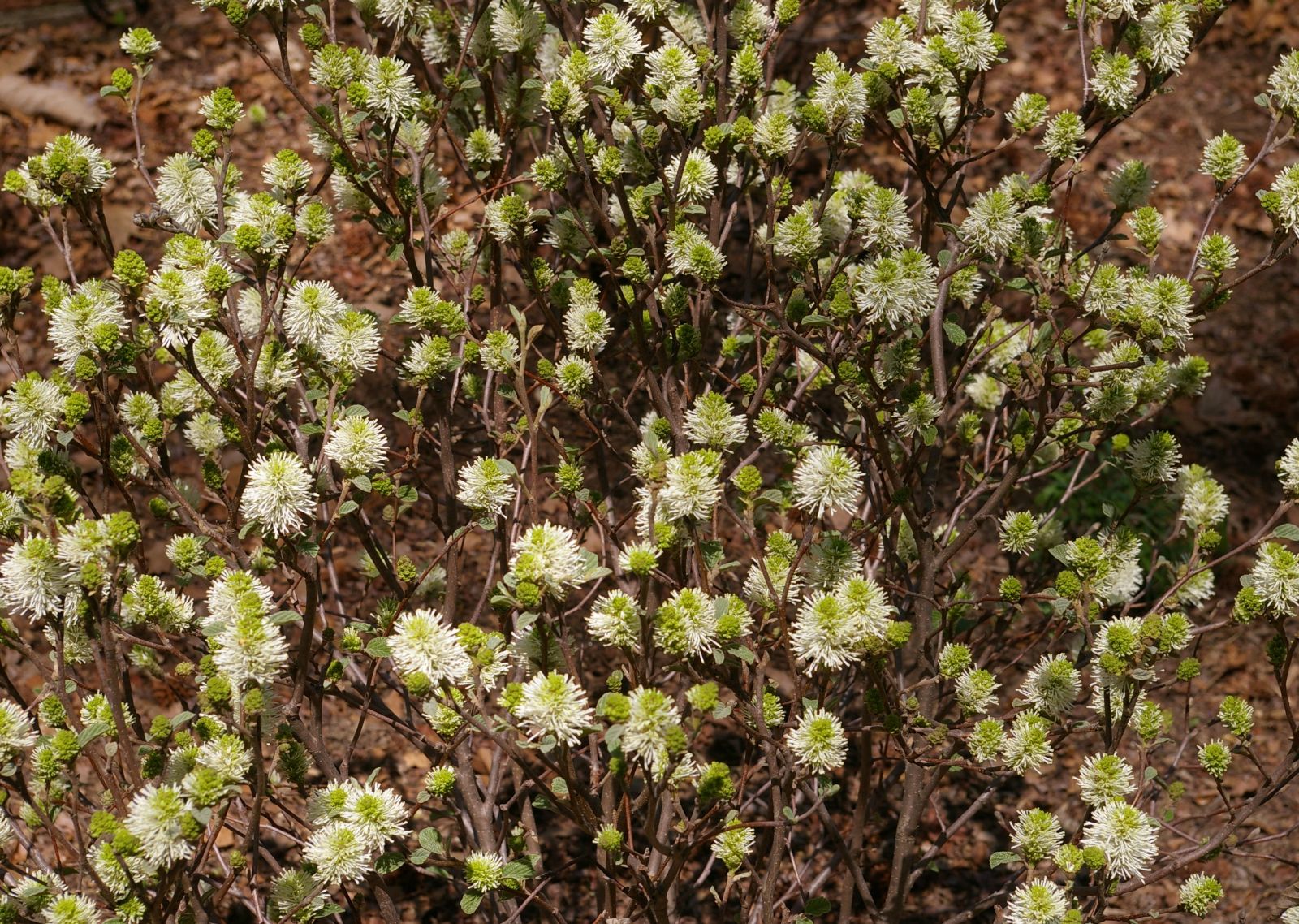Fothergilla gardenii
Credits
Article from Bean's Trees and Shrubs Hardy in the British Isles
Recommended citation
'Fothergilla gardenii' from the website Trees and Shrubs Online (treesandshrubsonline.
Genus
Synonyms
- F. alnifolia L.f.
- F. Carolina Britton
A deciduous shrub of thin habit, rarely more than 2 or 3 ft high, with slender, crooked, often rather weak and spreading branches; young twigs covered with white, stellate hairs. Leaves oval or obovate, 1 to 21⁄2 in. long, 3⁄4 to 13⁄4 in. wide, heart-shaped, rounded or tapering at the base, with several large unequal teeth above the middle, downy, and green or whitish beneath; stalk 1⁄4 in. long, downy. Flowers in cylindrical terminal spikes, consisting chiefly of a mass, 1 to 11⁄2 in. long, and about 1 in. through, of white stamens with yellow anthers; petals none. Bot. Mag., t. 1341.
Native of the south-eastern United States; first discovered by Dr Garden of Charlestown, USA, and introduced in 1765. It flowers on the naked branches in April and May, and is then very pretty and fragrant. Although hardy, this shrub is not robust. It does not like a heavy soil so much as one of peat and sandy loam combined. The leaf is variable in shape, on account of which attempts have been made to differentiate two or three varieties such as var. obtusa (Bot. Mag., t. 1341), with obovate bluntish leaves; and var. acuta, with ovate, pointed leaves. The foliage often turns a beautiful crimson before falling. This species differs from the following in its much smaller stature, in the smaller leaves, and in the flowers being borne before the leaves unfold.
'Blue Mist'
Introduced by the Morris Arboretum, ‘Blue Mist’ was selected for its glaucous, bluish-green foliage on an airy plant, but it doesn’t colour well in autumn and is not very satisfactory in the heat of the American south-east (Dirr 2009).


